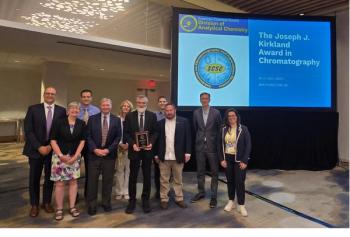
Improved Solvent Screening for Precise Chromatographic Fractionation of Complex Samples
An efficient solvent system screening approach that streamlines fractionation of compounds with similar UV absorption eliminates the need for individual partition coefficient calculations, and coupled with preparative HPLC purification, led to the isolation of seven c-glycosyl flavonoids and an amino acid from barley seedlings.
In a recent study published in the Journal of Separation Science, a collaboration between scientists from the Chinese Academy of Science in Xining, the University of the Chinese Academy of Sciences in Beijing, and the Dongying Adminstration for Market Regulation, all in China, employed a novel approach to facilitate the fractionation and purification of compounds with similar UV absorption (1). This method offers a more efficient and simplified strategy to obtain pure compounds from complex samples, a much-sought-after objective when it comes to chromatographic techniques.
Traditionally, the chromatographic fractionation of compounds that had similar UV absorption required the calculation of partition coefficient values for each individual compound in a sample. This approach can be time-consuming and labor-intensive, particularly when dealing with complex mixtures. However, the research team's new methodology eliminated the need for these cumbersome calculations. Instead, researchers focused on the overall partition coefficient of the entire sample, aiming for a value as close to one as possible, to maximize the number of high-speed countercurrent chromatography (HSCCC) fractions.
The study specifically investigated flavonoids from barley seedlings, a class of compounds known for diverse biological activities. By employing an ethyl acetate/n-butanol/water (8:2:10, v:v:v) solvent system, the researchers successfully fractionated the sample using HSCCC, which leveraged the simplified screening process. This experimental approach paved the way for an efficient and straightforward method for obtaining pure compounds.
After the initial fractionation, the next step involved preparative high performance liquid chromatography (HPLC) to purify the fractions obtained from the HSCCC process. This two-step strategy demonstrated notable success in the separation and purification of compounds, presenting a promising alternative to more traditional methods.
The results of the study showed that the researchers successfully isolated seven c-glycosyl flavonoids and an amino acid from a barley seedling sample. This highlights the potential of HSCCC as a valuable tool for fractionation before purification. The research also showcased significant improvement in separation efficiency, making the approach highly advantageous for laboratories and industries involved in the isolation and purification of complex mixtures.
The method presented in this study has implications for scientists working with compounds that share similar UV absorption profiles. By eliminating the need for extensive partition coefficient calculations, it simplifies and accelerates the fractionation process, potentially leading to more efficient and cost-effective procedures. Furthermore, the successful isolation of specific flavonoids from barley seedlings was a microcosm of the broader applicability of this approach to various complex samples.
This research introduces a solvent screening strategy that enhances the precision of chromatographic fractionation. This method, combined with preparative HPLC purification, represents improvements in separation efficiency, holding promise for researchers and industries seeking more streamlined and effective ways to isolate and purify compounds from complex mixtures.
This article was written with the help of artificial intelligence and has been edited to ensure accuracy and clarity. You can read more about our
Reference
(1) Chen, T.; Jia, J.; Shen, C. UV-Based Solvent System Screening for High-Speed Counter-Current Chromatography Fractionation of Compounds with Similar UV Absorption from Complex Samples Followed by Preparative HPLC Purification: Flavonoids from Barley Seedlings as Sample. J. Sep. Sci. 2023, e2300558. DOI:
Newsletter
Join the global community of analytical scientists who trust LCGC for insights on the latest techniques, trends, and expert solutions in chromatography.





